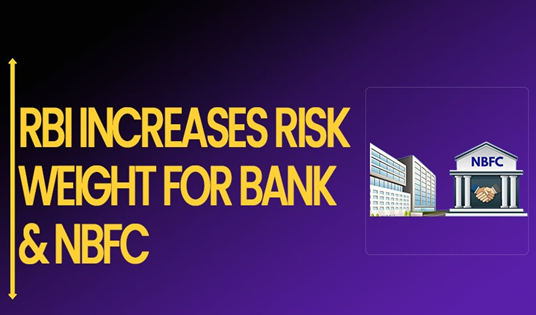Description

Copyright infringement not intended
Picture Courtesy: www.spidersoftwareindia.com
Context: The Reserve Bank of India (RBI) raised risk weights on specific consumer credit categories to 125% from 100% starting October 1, 2023, necessitating banks and NBFCs to allocate additional capital for these loans.
Risk Weights
- The Reserve Bank of India (RBI) periodically adjusts risk weights as part of its prudential regulatory measures to ensure the stability and health of the banking system.
- Risk weights are used in calculating the amount of capital that banks are required to hold against their assets, and changes in these weights can have significant implications for banks' capital adequacy and lending capacities.
What Are Risk Weights?
- Risk weights are numerical values assigned to different types of assets held by banks. These values reflect the perceived risk associated with each asset. The purpose is to ensure that banks have adequate capital reserves to cover potential losses arising from these assets.
- Banks are mandated to maintain a minimum Capital Adequacy Ratio. It's the ratio of a bank's capital to its risk-weighted assets. Higher-risk assets require a higher amount of capital to be held against them, thereby ensuring that banks have sufficient buffers to absorb potential losses.
Factors Influencing Changes in Risk Weights:
- Evolving Risks: The RBI regularly evaluates the risk landscape. If certain sectors or types of loans are deemed riskier due to economic conditions, market dynamics, or regulatory concerns, they may increase the risk weight to reflect this heightened risk.
- Preventive Measures: In times of economic stress or when specific sectors face challenges, the RBI may hike risk weights as a precautionary step to fortify banks against potential losses and maintain stability within the financial system.
Implications of Increased Risk Weights:
- Capital Requirements: Higher risk weights necessitate banks to allocate more capital against these assets. This might lead to a reduction in the overall capital available for lending or expansion. Banks need to meet regulatory requirements for maintaining a certain capital buffer. Increased risk weights could demand banks to raise additional capital or adjust their asset portfolios.
- Lending Practices: Banks might become more cautious in extending credit to sectors or borrowers associated with elevated risk weights. This caution could affect the availability and terms of loans.
- Asset Quality and Portfolio Management: Banks might reassess their asset portfolios and potentially divest from riskier assets to comply with the regulatory changes. This could impact the overall risk profile of their lending practices.

Recent RBI's Action on Risk Weights
- The RBI recently increased the risk weights on certain unsecured loans such as credit cards, consumer durable loans, and personal loans. It also raised the risk weight for bank lending to non-banking finance companies catering to this segment.
Impact on Borrowers
- Interest Rates: Lower risk weights usually translate to lower interest rates for borrowers. This happens because lower-risk weight assets require banks to set aside less capital, allowing them to lend at more competitive rates. For example, home loans often have lower interest rates compared to personal loans or credit cards because their risk weights are lower.
- Pricing of Loans: Risk weights indirectly influence the pricing of loans. Higher risk-weights mean banks have to allocate more capital, potentially leading to higher interest rates for borrowers.
Reasons Behind RBI's Concern
- Rising Unsecured Loans: Unsecured loans have been growing rapidly, reaching around 10% of the banking system's portfolio. This category includes loans for consumer durables and personal expenses. The concern arises from the lack of collateral in these loans and the inability to monitor the end-use of funds, which makes assessing the borrower's repayment capacity challenging.
- Risk Mitigation: By increasing risk weights, the RBI aims to ensure banks are adequately prepared for potential losses in these segments and to prevent excessive exposure that could become a threat to the banking system.
Impact on Retail Loans
- Capital Consumption: The new risk weight limits might require banks to hold more capital against these loans, possibly increasing the cost of lending by 35-100 basis points. Well-capitalized lenders may not face an immediate need to raise additional capital, but PSU banks might be affected more significantly.
- Growth and Pricing Dynamics: Despite the increase in risk weights, immediate curbing of loan growth might not happen, especially considering the strong demand for credit even in the face of interest rate changes. However, this move might influence the overall pricing strategies of banks and will be closely monitored by lenders and borrowers alike.

Conclusion
- The RBI's adjustment in risk weights aims to address the rapid growth in certain segments of unsecured loans, ensuring banks are better prepared for potential risks. While it might marginally impact the cost of lending and capital requirements for banks, the immediate effect on loan growth might not be significant. Yet, it could prompt a reevaluation of pricing strategies in the retail lending space.
|
PRACTICE QUESTION
Q. How does the Reserve Bank of India's recent increase in risk weights impact the banking sector, and what implications does it have for financial stability and lending practices in the country?
|















